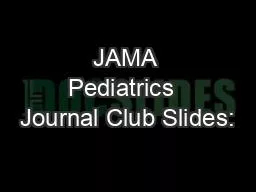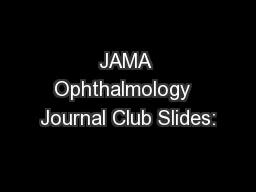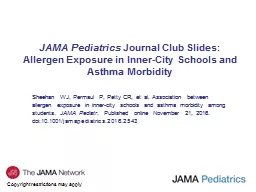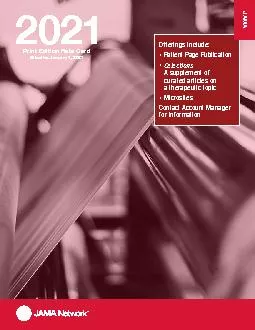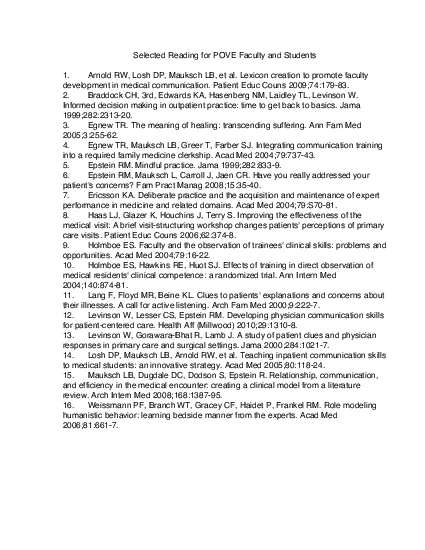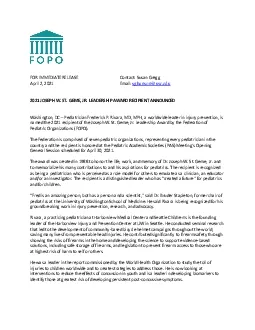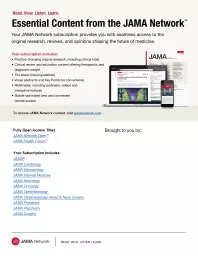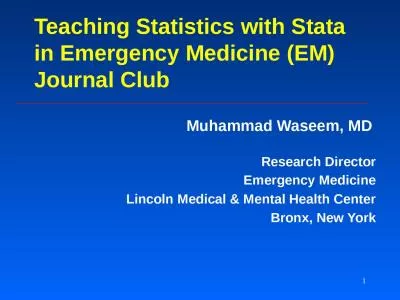PPT-JAMA Pediatrics Journal Club Slides:
Author : eatsui | Published Date : 2020-06-29
Total Serum Bilirubin Levels at or Above the ETT Wu YW Kuzniewicz MW Wickremasinghe AC et al Risk of cerebral palsy in infants with total serum bilirubin levels
Presentation Embed Code
Download Presentation
Download Presentation The PPT/PDF document "JAMA Pediatrics Journal Club Slides:" is the property of its rightful owner. Permission is granted to download and print the materials on this website for personal, non-commercial use only, and to display it on your personal computer provided you do not modify the materials and that you retain all copyright notices contained in the materials. By downloading content from our website, you accept the terms of this agreement.
JAMA Pediatrics Journal Club Slides:: Transcript
Download Rules Of Document
"JAMA Pediatrics Journal Club Slides:"The content belongs to its owner. You may download and print it for personal use, without modification, and keep all copyright notices. By downloading, you agree to these terms.
Related Documents

